Who is Gunnar?
“Great feel, always in the pocket”
“Best tempo in town”
“Versatile, solid, consistent”
“Muti-talented”
“A dependable, no-nonsense pro”
“He walked away from the business too soon”
"My thanks to
everyone who
believed in me.
(You know who
you are.)"
--- Gunnar
PRAISE FROM FORMER COLLEAGUES
Achievements
Special Thanks to
The character “Gunnar” in the hit TV series “Nashville,”
was loosely based on him (2012─2018)
Finished 102 out of 25,000 contestants for his entry in the “American Idol” Songwriting Competition (2007)
Selected for inclusion in the Marquis publication, “Who’s Who in Entertainment” (1992)
Selected by Country Music Magazine as one of the “Four Best Young Pickers” in Nashville (1977)
Fred Carter, Jr
Gene Rice
Dave Loggins
Mike Noble
Randy Goodrum
Chet Atkins
Bob Millsap
Rich Schirmer
Tommy Overstreet
Gene Cotton
Steve Gibson
Bill Martin
Norbert Putnam
Mac Gayden
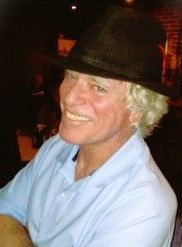
“Great feel, always in the pocket”
“Best tempo in town”
“Versatile, solid, consistent”
“Muti-talented”
“A dependable, no-nonsense pro”
“He walked away from the business too soon”
PRAISE FROM FORMER COLLEAGUES
Achievements
Special Thanks to
The character “Gunnar” in the hit TV series “Nashville,”
was loosely based on him (2012─2018)
Finished 102 out of 25,000 contestants for his entry in the “American Idol” Songwriting Competition (2007)
Selected for inclusion in the Marquis publication, “Who’s Who in Entertainment” (1992)
Selected by Country Music Magazine as one of the “Four Best Young Pickers” in Nashville (1977)
Fred Carter, Jr
Gene Rice
Dave Loggins
Mike Noble
Randy Goodrum
Chet Atkins
Bob Millsap
Rich Schirmer
Tommy Overstreet
Gene Cotton
Steve Gibson
Bill Martin
Norbert Putnam
Mac Gayden
"My thanks to
everyone who
believed in me.
(You know who
you are.)"
--- Gunnar
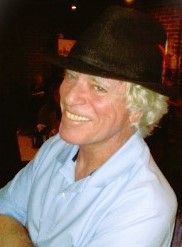
GUNNAR was born Robert Gunnar Gelotte on December 26 1950 in Quincy, Massachusetts, the second of two children in the second generation of a family of Swedish immigrants.
His interest in music began immediately. At age 10, he knew he wanted to play drums, and by age 12 he’d learned everything his music teacher could teach him. In 1963, his family moved from the suburbs of Boston to the suburbs of Baltimore.
Inspired by Soul music and the British Invasion, Gunnar cut his teeth as a drummer with pop/R&B bands in the Baltimore-Washington area throughout high school, while also studying jazz and playing in the school orchestra and show band.
Gunnar - known as Bob until many years later - was a passionate student of music theory and composition, as well as a gifted singer and guitarist. His creativity, versatility and experience would eventually lead him to songwriting and aspirations of becoming a successful recording artist.
At the College of William & Mary in Virginia, Gunnar formed a rock-and-roll band that played in and around the Tidewater area (One of his band’s biggest fans was a local high school kid named Bruce Hornsby).
On weekends when he wasn’t working, Gunnar often volunteered as a stage hand for one of the area’s largest venues, where he was fortunate to learn first-hand from conversations with music greats including
Jerry Garcia,
Ian Anderson,
Steve Winwood, and
Rod Stewart.
About Gunnar

By the time he graduated in 1972, Gunnar had developed his own singing and songwriting style, and a demo of his band’s music drew the attention of Nashville guitarist and producer Fred Carter, Jr. Fred had been the guitarist for Ronnie Hawkins & The Hawks, whose bandmembers went on to become The Band.
Fred invited Gunnar and his band to record at his Nugget Records studio in Nashville, and later to record as a solo artist with top session players from Memphis and Muscle Shoals. The results led to discussions with Capitol Records and motivated Gunnar to continue writing and performing. In the summer of 1974, he packed up his ’67 Plymouth Barracuda and headed back to Nashville for good.
Upon his arrival in Music City, Gunnar landed a road gig as drummer and backup singer for songwriter/artist Dave Loggins, who had just scored his first big hit with “Please Come to Boston.” It was Loggins’ band who suggested he use the name Gunnar, and it stuck. He also toured briefly with Chet Atkins and got steady session work, and he soon developed a solid reputation as a recording musician.
He recorded with country artists including Lynn Anderson, Ronnie Milsap, George Strait, Marty Robbins, Hank Snow, Tommy Overstreet, Bobby Bare, Jim Ed Brown and Helen Cornelius, Ray Stevens, and yes, Johnny Cash, among others.
His range of session work was even wider, including work for former hit-makers The Grass Roots, Dobie Gray (best known for the song Drift Away), Jimmy Hall (of Wet Willie), Al Kooper (founding member of Blood, Sweat & Tears), Perry Como (Perry Como!), and Woody Herman (Woody Herman!).
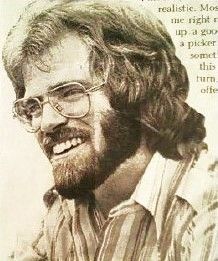
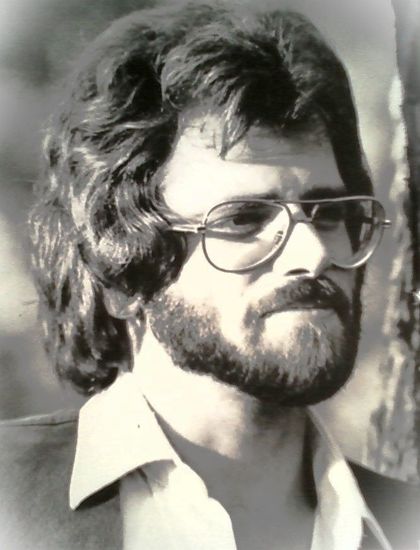
In addition, Gunnar worked on several commercial jingles and a couple of movie soundtracks: “Tender Mercies,” starring Robert Duvall, and “Stir Crazy,” starring Richard Prior and Gene Wilder.
Gunnar continued to write and pitch his songs, and he established Big Gun Music as a production and publishing vehicle. He managed to get a few of his songs cut by established artists such as Tommy Overstreet and Gene Cotton. One of his songs, recorded by The Mercey Brothers, reached #8 on the charts in Canada, and two others came close to being recorded by Glen Campbell and Art Garfunkel.
Gunnar’s talents also brought more interest as an artist, but being known as a drummer, he knew it was a long shot to become a front man from behind a drum kit. Reality was that drummers were never seriously considered as artists or singer/songwriters unless they were signed as part of a band (like Levon Helm of The Band, Don Henley of The Eagles, and Phil Collins of Genesis).
His versatility did attract some attention from people connected with Pure Prairie League and Journey - bands that had already achieved popular success and were considering some changes to their lineups - but an opportunity to audition never materialized.
He also received an offer from a production manager who worked with the pop group ABBA to work in Sweden for several months, but he declined in favor of maintaining valuable relationships at home instead of being away for that long.
Through a deal struck with Casablanca Records in Los Angeles, Nashville producer Norbert Putnam (former producer for Jimmy Buffet, Linda Ronstadt, Joan Baez, and Dan Fogelberg) invited Gunnar to join a group of hand-picked session musicians and singer/songwriters to create an original rock-and-roll concept album under the band name Nashville. After the master was in the can and plans for a tour were in the works, Polygram took over Casablanca and dropped the newly signed band from its roster.
Always undaunted by the ups and downs of the business, Gunnar continued to work on building his session work as a drummer and backup singer.
The mid-1980s brought several technological changes. Computers, synthesizers, sound-sampling, and drum machines made recording more efficient, often with less dependence on live musicians.
With session work declining, Gunnar turned his attention to film and video production, becoming an associate producer and financial manager for a Nashville firm serving clients in advertising, music video production, television, and motion pictures (including The Nashville Network, Disney, and Touchstone Pictures).
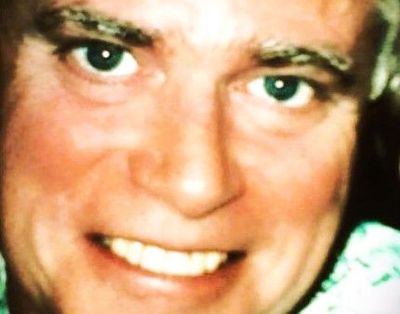
In 1992, at age 41 and nearly 20 years after he first broke into the music business, Gunnar was back in the studio one last time recording another artist demo. This time, he enlisted the help of fellow session player and songwriter Randy Goodrum, who penned the triple-chart-breaking “You Needed Me,” recorded by Anne Murray (Gunnar played on the original demo). Randy had contact with a VP at RCA Records in New York to pitch the project, but his contact left RCA soon afterward and the connection was lost.
To this day, others have wondered why Gunnar never landed more success as a writer/artist, among them John Fogerty of Credence Clearwater Revival and country artist/songwriter Earl Thomas Conley, who once held the record for most hit singles on a country music album.
My career may only be a footnote in music history, but it gave me a chance to be part of it.
I’ve been lucky enough to work with some of the great artists and musicians of all time, so my playing, my singing, and even a few of my songs will still be heard on albums for as long as they’re remembered.
Truly, there was no better time to be in the music business than the years when I made music my career. There was a level of creativity, spirit, and magic that in my opinion has been missing in contemporary music ever since. But good songs will always be good songs.
As for my songwriting, I was not a prolific writer working to fit the style of an existing artist about to cut a new album, but rather as an artist myself, with the intent of touching others in my own way with my own style. If I didn’t feel it, I wouldn’t write it. Still, when an artist hears one of my songs and likes it enough to perform it, I am always grateful.
Times and music will always change, but I will always believe that at least some of the songs in my catalog will survive and be marketable for the right artist.
My music is a legacy I leave with rights to my catalog, marked with the same hope and spirit I had when I created it.
GUNNAR LOOKS AT IT THIS WAY:
Created and Hosted with BUILD by One Eleven
